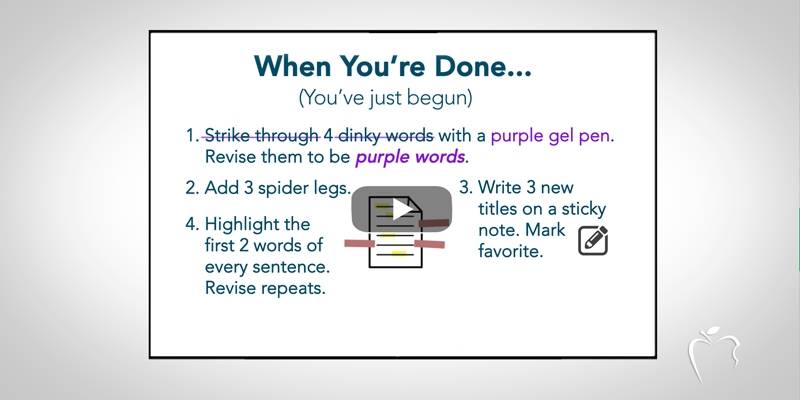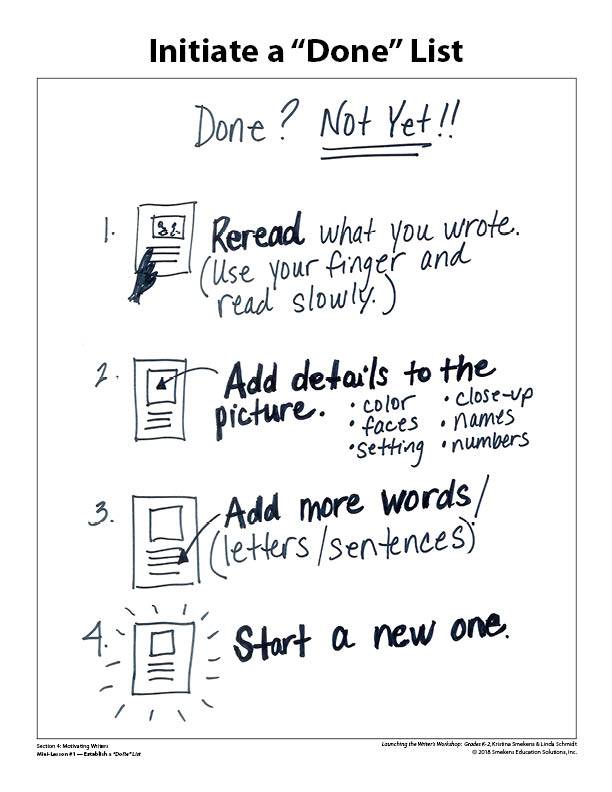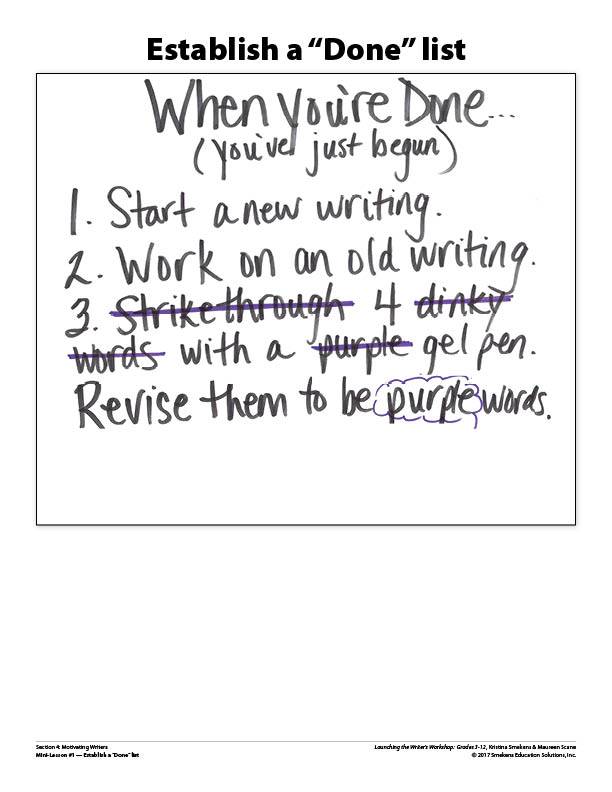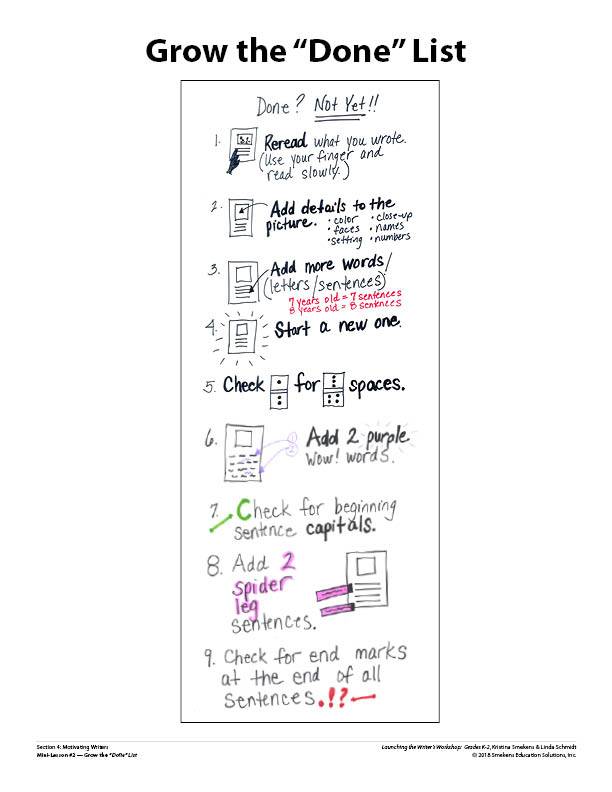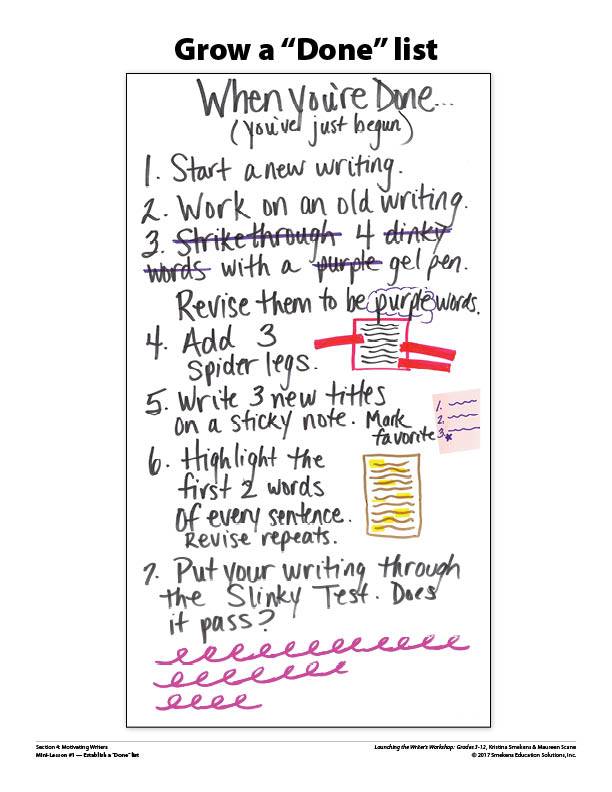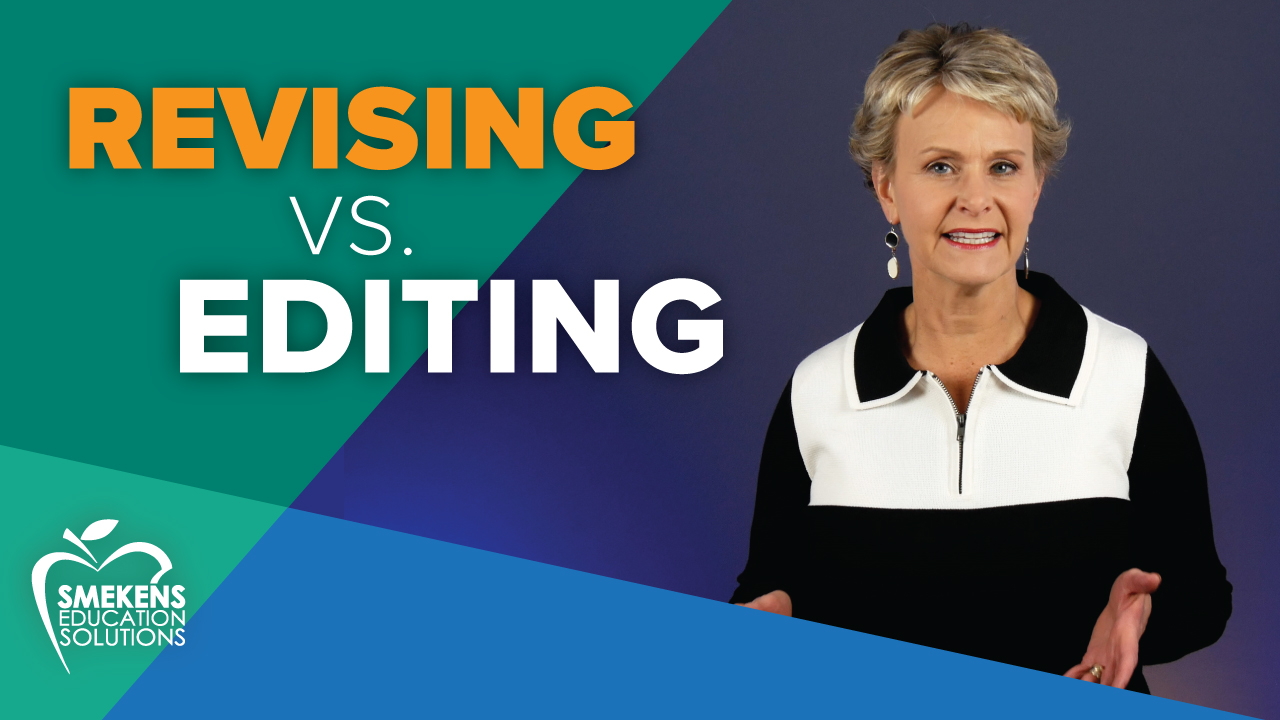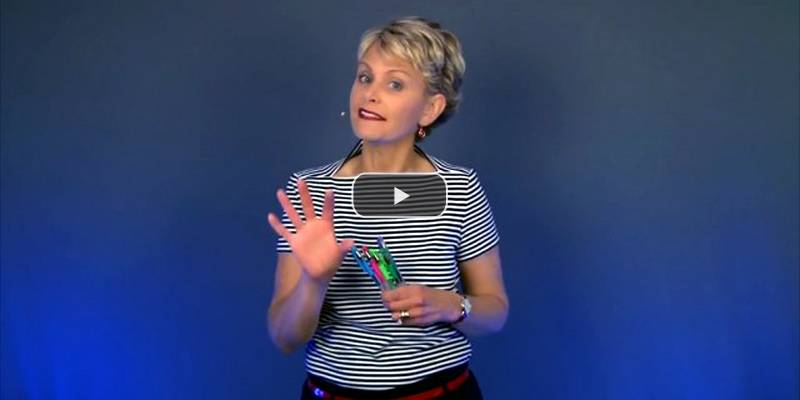Learning Center
Writing
Establish a “Done” List
May 27, 2019
Effective writing mini-lessons always end with a Now-It’s-Your-Turn writing time. But no matter how long a teacher thinks the task will take, there are always students who finish and announce “DONE!” in far less time than anticipated.
This rush to finish occurs because some students don’t think of writing as a process–instead, it’s a chore. They aren’t embracing the opportunity to craft a piece of writing. They see this as an assignment to complete! Consequently, motivating these students to continue working on their drafts can be tricky because in their minds, they are done!
To overcome this problem, generate a “Done” List–specific tasks to reengage writers when they think they are finished.
Your initial “Done” List starts with just a few tasks and must be displayed within the classroom.
1. Read aloud your writing to a classmate.
2. Insert three details (words or phrases) with a blue pen.
3. Strikethrough four “dinky” words with a purple pen and replace them with purple words.
Notice that the “Done” List features specific and focused revision skills with precise quantities. Because “Done” writers are task-based students, asking them to “reread, revise, and make it better” is often futile. The ambiguity of that “task” is overwhelming and vague for many.
In addition, it’s important to connect the tasks to writer tools (e.g., highlighters, colored pens, sticky notes, etc.). Remember, some students didn’t want to do the writing in the first place; revision will be even less appealing. Writer tools can motivate reluctant students.
As the year progresses, the initial “Done” List will get stale. Therefore, plan to update the chart periodically in order to maintain motivation.
4. Write three new titles on a sticky note. Mark your favorite.
5. Highlight the first two words of every sentence. Revise any repeats.
6. Put your writing through the Slinky Test. Does it pass? Add and delete words to vary sentence lengths.
Notice that these sample tasks all target revision. Typically, students should focus on polishing the message before they edit for conventions. The exception to this includes those primary, ELL, and special needs students who may lack basic sentence mechanics. (There is no sense encouraging the student to write more if the teacher can’t read the little bit he wrote.) The “Done” List in these classrooms might include:
1. Check for spaces between words.
2. Check for beginning sentence capitals.
3. Check for end marks at the end of all sentences.!?
Regardless of the tasks, the concept of the “Done” List is a valuable procedure that helps to ensure a well-run writer’s workshop. Acknowledge that it’s normal for writers to come to a stopping point but clarify that they’re never done. Lucy Calkins says it best; “When you’re done, you’ve just begun.”

